How Cybersecurity Affects Our Daily Lives
In our fast-paced, technology-driven world, cybersecurity is more than just a buzzword; it’s a fundamental aspect of our daily lives. Imagine waking up in the morning, checking your email, and scrolling through social media. Each click, each interaction, is a potential gateway for cyber threats. The truth is, as we embrace the digital age, we become increasingly vulnerable to various cyber risks that can jeopardize our personal information, finances, and even our national security. So, how does cybersecurity weave itself into the fabric of our everyday activities? Let’s dive deeper into this crucial subject.
Understanding why cybersecurity is essential in today's digital landscape helps us appreciate its role in safeguarding sensitive data and maintaining the integrity of online interactions across various sectors. Think of cybersecurity as the security system of your house. Just as you wouldn’t leave your front door wide open, you shouldn’t leave your digital life unprotected. It encompasses everything from protecting our banking information to ensuring that our private conversations remain confidential. Without robust cybersecurity measures, we risk exposing ourselves to identity theft, financial fraud, and other malicious activities.
In the realm of cybersecurity, knowledge is power. By understanding the common cyber threats we face, we can better equip ourselves to combat them. Cyber threats come in many forms, and they’re constantly evolving. Here are a few prevalent types:
- Malware: Malicious software designed to disrupt, damage, or gain unauthorized access to computer systems.
- Phishing: Deceptive attempts to trick individuals into revealing sensitive information.
- Ransomware: A type of malware that locks users out of their systems until a ransom is paid.
Each of these threats has the potential to cause significant harm, not just to individuals but also to organizations and even entire nations. Understanding these threats is the first step in protecting ourselves.
Malware encompasses various forms of malicious software designed to disrupt, damage, or gain unauthorized access to computer systems, posing significant risks to both personal and professional data security. It's like a stealthy intruder that sneaks into your digital home, rummaging through your files, and stealing your valuables. The types of malware are diverse, but they can generally be categorized as:
| Type of Malware | Description |
|---|---|
| Viruses | Programs that attach themselves to clean files and spread throughout a computer system. |
| Worms | Standalone malware that replicates itself to spread to other computers. |
| Trojans | Malware disguised as legitimate software to trick users into installing it. |
Each type of malware has unique characteristics and methods of operation, making it crucial to understand them to effectively protect against their threats.
Implementing robust antivirus software, regular system updates, and safe browsing practices are essential measures to safeguard against malware infections and maintain a secure digital environment. Just like locking your doors and windows, these steps create a barrier against potential threats.
Phishing scams exploit human psychology to deceive individuals into revealing sensitive information, often leading to identity theft and financial loss. It’s like a con artist pretending to be someone you trust, coaxing you into handing over your personal treasures. Awareness and education are vital in prevention efforts. Always be skeptical of unsolicited emails or messages, especially those that ask for personal information.
Businesses face significant cybersecurity challenges that can affect their operations, reputation, and customer trust. Imagine a company that falls victim to a data breach; the fallout can be catastrophic. Not only do they face financial losses, but their credibility can also take a hit, leading to a loss of customers. This emphasizes the need for comprehensive security strategies to mitigate risks and protect valuable assets.
Data breaches can have devastating effects on organizations, leading to financial losses, legal repercussions, and damage to brand credibility. It’s like a thief breaking into a store and stealing not just cash but also the trust of its customers. Companies must prioritize cybersecurity to avoid such scenarios.
Investing in employee training programs on cybersecurity best practices fosters a culture of security awareness. Just like a well-trained team in a sports game, informed employees are less likely to make errors that could lead to security incidents.
Cybersecurity impacts our daily routines, from online banking to social media use. It’s not just a concern for IT departments; it’s something that each of us needs to think about. Understanding the importance of secure online banking practices, such as using strong passwords and enabling two-factor authentication, can help individuals safeguard their financial information. When it comes to social media, recognizing potential privacy risks and implementing security measures to protect personal data from unauthorized access and exploitation is crucial.
As technology evolves, so do cyber threats. This means that cybersecurity is not a one-time effort but a continuous journey. Emerging trends and innovations in cybersecurity aim to enhance protection and resilience against increasingly sophisticated attacks. For instance, the integration of artificial intelligence in cybersecurity offers advanced threat detection and response capabilities, revolutionizing how organizations defend against cyber attacks and manage security incidents.
Ongoing regulatory changes necessitate that organizations stay compliant with cybersecurity laws. Understanding legal frameworks is essential to avoid penalties and enhance data protection practices. Just as we must adapt to changing laws in our society, businesses must stay informed about cybersecurity regulations to protect themselves and their customers.
Q: What is cybersecurity?
A: Cybersecurity refers to the practice of protecting systems, networks, and programs from digital attacks.
Q: Why is cybersecurity important?
A: It is crucial for protecting sensitive information, maintaining privacy, and ensuring the integrity of data.
Q: What are some common cyber threats?
A: Common threats include malware, phishing scams, and ransomware attacks.
Q: How can I protect myself online?
A: Use strong passwords, enable two-factor authentication, and be cautious of unsolicited communications.
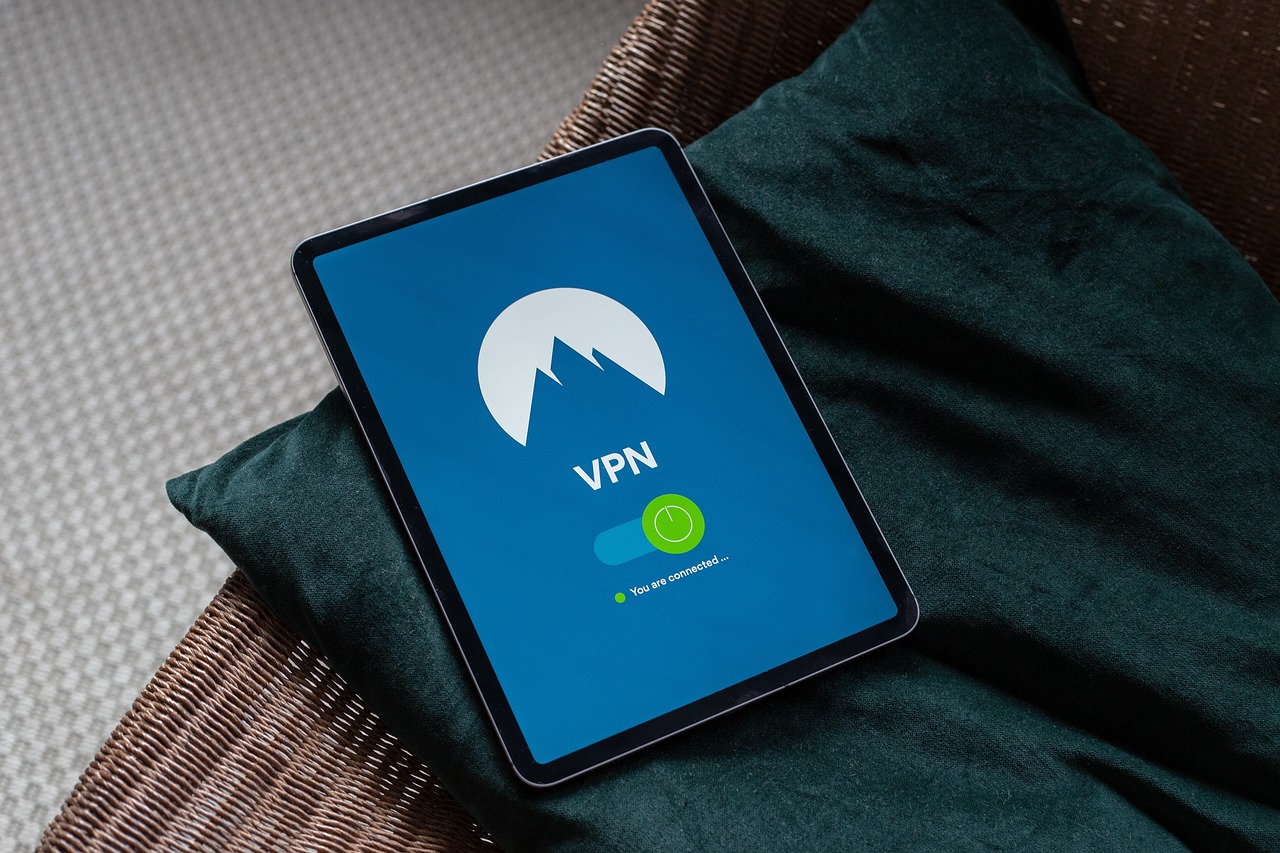
The Importance of Cybersecurity
In our increasingly interconnected digital world, the significance of cybersecurity cannot be overstated. It's not just a technical issue; it’s a fundamental aspect of our daily lives that affects how we interact, work, and conduct business. Imagine walking through a bustling city where every building is a digital entity, and every window is an entry point for potential threats. Just like we lock our doors at night to keep intruders out, cybersecurity acts as our digital lock, protecting our sensitive information from prying eyes.
Understanding why cybersecurity is essential helps us appreciate its role in safeguarding sensitive data and maintaining the integrity of online interactions across various sectors. From personal banking to corporate data management, the implications of a security breach can be catastrophic. A single compromised password can lead to identity theft, financial loss, or even corporate espionage.
Moreover, cybersecurity is crucial for maintaining trust in the digital ecosystem. When customers share their personal information online, they expect it to be protected. Companies that fail to secure their data not only risk financial penalties but also face the daunting task of rebuilding their reputation. This trust is the currency of the digital age, and cybersecurity is the safeguard that ensures it remains intact.
To illustrate the importance of cybersecurity, consider the following key points:
- Protection of Personal Information: With the rise of social media and online transactions, personal data is more vulnerable than ever. Cybersecurity measures help protect this information from theft and exploitation.
- Business Continuity: For businesses, a cyber attack can halt operations, leading to significant financial losses. Strong cybersecurity practices ensure that businesses can continue to operate smoothly, even in the face of threats.
- National Security: On a larger scale, cybersecurity is vital for protecting national infrastructure and sensitive government information from foreign adversaries.
As we navigate through this digital landscape, it’s essential to recognize that cybersecurity is not just a responsibility for IT departments; it’s a collective effort that involves every individual. By adopting safe online practices, staying informed about potential threats, and advocating for stronger cybersecurity measures, we can contribute to a safer digital environment for everyone.
In conclusion, the importance of cybersecurity transcends mere technical jargon; it is a crucial element that underpins our daily interactions and the functioning of our society. As we continue to rely on technology, understanding and prioritizing cybersecurity will be paramount in protecting our personal lives, businesses, and even our nations.
- What is cybersecurity? Cybersecurity refers to the practice of protecting systems, networks, and programs from digital attacks that aim to access, change, or destroy sensitive information.
- Why is cybersecurity important? It is essential for protecting personal data, ensuring business continuity, and maintaining national security.
- How can individuals protect themselves online? Individuals can enhance their online security by using strong passwords, enabling two-factor authentication, and being cautious about the information they share on social media.

Common Cyber Threats
In our digital age, the internet has become a double-edged sword. While it offers unprecedented access to information and connectivity, it also opens the door to a myriad of cyber threats that can jeopardize our personal and professional lives. Understanding these threats is crucial for anyone navigating the online world. Cybercriminals are constantly evolving their tactics, making it essential for individuals and organizations alike to stay informed and prepared.
Among the most prevalent threats are malware, phishing, and ransomware. Each of these attacks targets users in different ways, exploiting vulnerabilities in both technology and human behavior. For instance, malware can infiltrate systems silently, while phishing scams often rely on deception to trick individuals into divulging sensitive information. Let's dive deeper into these common threats to understand their mechanisms and implications.
Malware, short for malicious software, is an umbrella term that encompasses a variety of harmful programs designed to disrupt, damage, or gain unauthorized access to computer systems. It can manifest in several forms, including viruses, worms, and Trojans. Each type operates differently, but they all share a common goal: to compromise your data. For instance, a virus might attach itself to a legitimate program, spreading as users share files, while a worm can replicate itself across networks without any user intervention.
Understanding the different types of malware is essential for effective defense. Here’s a brief overview of some common types:
- Viruses: These attach themselves to clean files and spread throughout a computer system, corrupting files and causing havoc.
- Worms: Unlike viruses, worms can self-replicate and spread across networks, often consuming bandwidth and causing network slowdowns.
- Trojans: These disguise themselves as legitimate software, tricking users into downloading them, which then allows attackers to access their systems.
To safeguard against malware, it's vital to implement a multi-layered approach. Utilizing robust antivirus software is a foundational step, but it doesn't end there. Regular system updates ensure that vulnerabilities are patched, while safe browsing practices, such as avoiding suspicious links and downloads, can significantly reduce your risk of infection. Think of your digital life as a house; without strong locks (antivirus) and regular maintenance (updates), you're leaving the door wide open for intruders.
Phishing scams are another common cyber threat that exploits human psychology rather than technical vulnerabilities. These scams often come in the form of emails or messages that appear to be from legitimate sources, tricking individuals into revealing sensitive information such as passwords or credit card numbers. The consequences can be dire, leading to identity theft and significant financial loss.
To combat phishing, awareness and education are key. Always scrutinize emails that request personal information, especially if they create a sense of urgency. If something seems off, it probably is. Remember, legitimate organizations will never ask for sensitive information via email. By staying vigilant, you can protect yourself from falling victim to these deceptive tactics.
Ransomware is one of the most frightening cyber threats, likened to a digital kidnapper that locks you out of your own files until you pay a ransom. This type of malware encrypts your data, making it inaccessible until the victim pays the demanded amount, usually in cryptocurrency. The impact of ransomware can be catastrophic, often resulting in data loss, financial strain, and significant downtime for businesses.
To defend against ransomware, regular data backups are crucial. If you have current backups stored securely, you can restore your data without succumbing to the ransom demands. Additionally, maintaining up-to-date security software and educating yourself and your employees about recognizing suspicious activity can help prevent these attacks from occurring in the first place.
In summary, understanding common cyber threats is your first line of defense in the digital landscape. By being aware of malware, phishing, and ransomware, and implementing proactive measures, you can better protect yourself and your organization from the ever-evolving world of cybercrime.
Q: What is the best way to protect my personal information online?
A: Use strong, unique passwords for each account, enable two-factor authentication, and be cautious about sharing personal information on social media.
Q: How can I recognize a phishing email?
A: Look for signs such as poor grammar, generic greetings, and requests for sensitive information. Always verify the sender's email address.
Q: What should I do if I suspect a malware infection?
A: Disconnect from the internet, run a full system scan with your antivirus software, and consider seeking professional help if the issue persists.
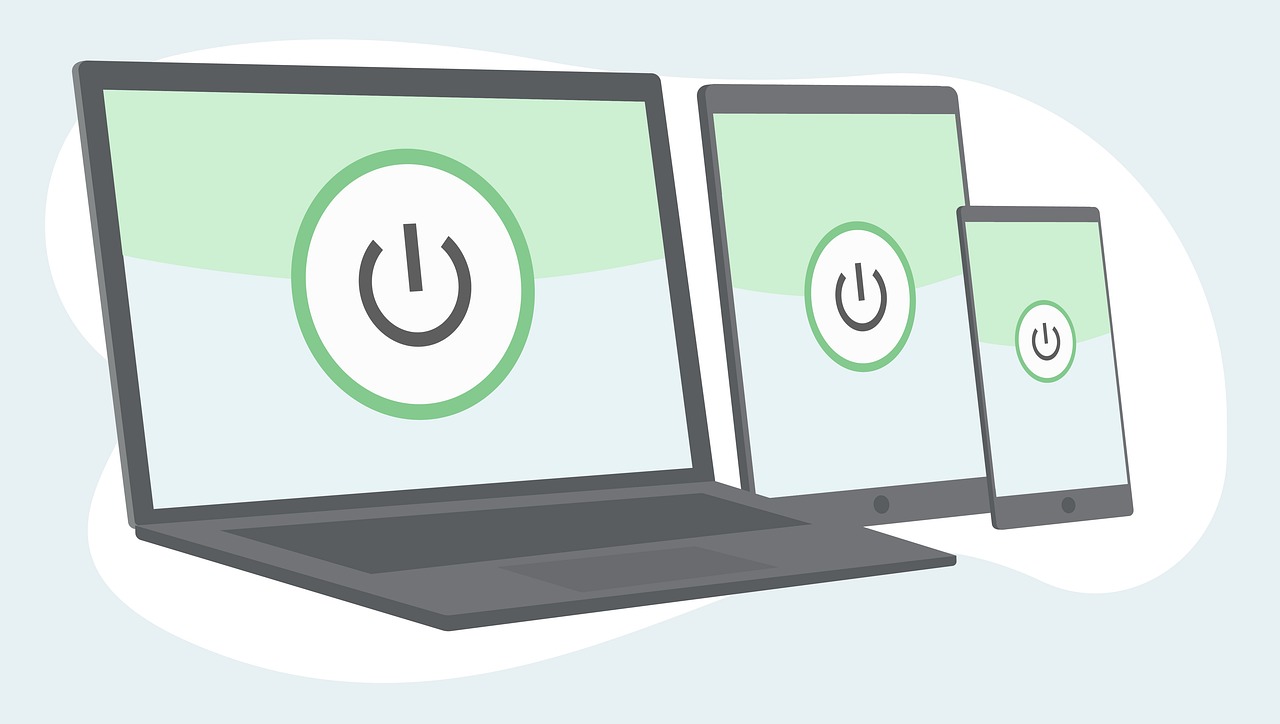
Malware: A Persistent Threat
In our increasingly digital world, malware stands as one of the most persistent and dangerous threats to both individuals and organizations. But what exactly is malware? Essentially, it refers to any software specifically designed to disrupt, damage, or gain unauthorized access to computer systems. Just like a thief sneaking into your home, malware can infiltrate your devices, wreaking havoc on your personal and professional data. Imagine waking up one day to find that your computer has been hijacked, your files encrypted, and a ransom demanded for their release—this is the grim reality many face when falling victim to malware.
Malware comes in various forms, each with its unique characteristics and methods of operation. Understanding these types is crucial for effective protection. Here are some common types of malware:
- Viruses: These attach themselves to legitimate software and spread when the infected software is shared.
- Worms: Unlike viruses, worms can replicate themselves and spread independently across networks.
- Trojans: These disguise themselves as harmless applications to trick users into installing them.
As you can see, the diversity of malware poses a significant challenge. Each type has its own strategy for infiltrating systems and causing damage. For instance, while a virus might spread through email attachments, a worm might exploit vulnerabilities in network protocols. This means that simply having antivirus software isn't enough; staying informed and vigilant is essential.
So, how can you protect yourself against these malicious threats? Here are some key strategies:
- Implement Robust Antivirus Software: Always have a reliable antivirus program installed and keep it updated to detect and neutralize threats.
- Regular System Updates: Ensure your operating system and software are updated regularly to patch vulnerabilities that malware could exploit.
- Safe Browsing Practices: Be cautious when clicking on links or downloading files from unknown sources. If it looks suspicious, it probably is!
In conclusion, malware is a persistent threat that requires constant vigilance and proactive measures to combat. By understanding the different types of malware and implementing effective protective strategies, you can significantly reduce your risk of falling victim to these digital attacks. Remember, in the world of cybersecurity, knowledge is your best defense!
Q: What is malware?
A: Malware is malicious software designed to disrupt, damage, or gain unauthorized access to computer systems.
Q: How can I protect my devices from malware?
A: Use robust antivirus software, keep your system updated, and practice safe browsing habits.
Q: What are the common types of malware?
A: Common types include viruses, worms, and Trojans, each with distinct methods of operation.
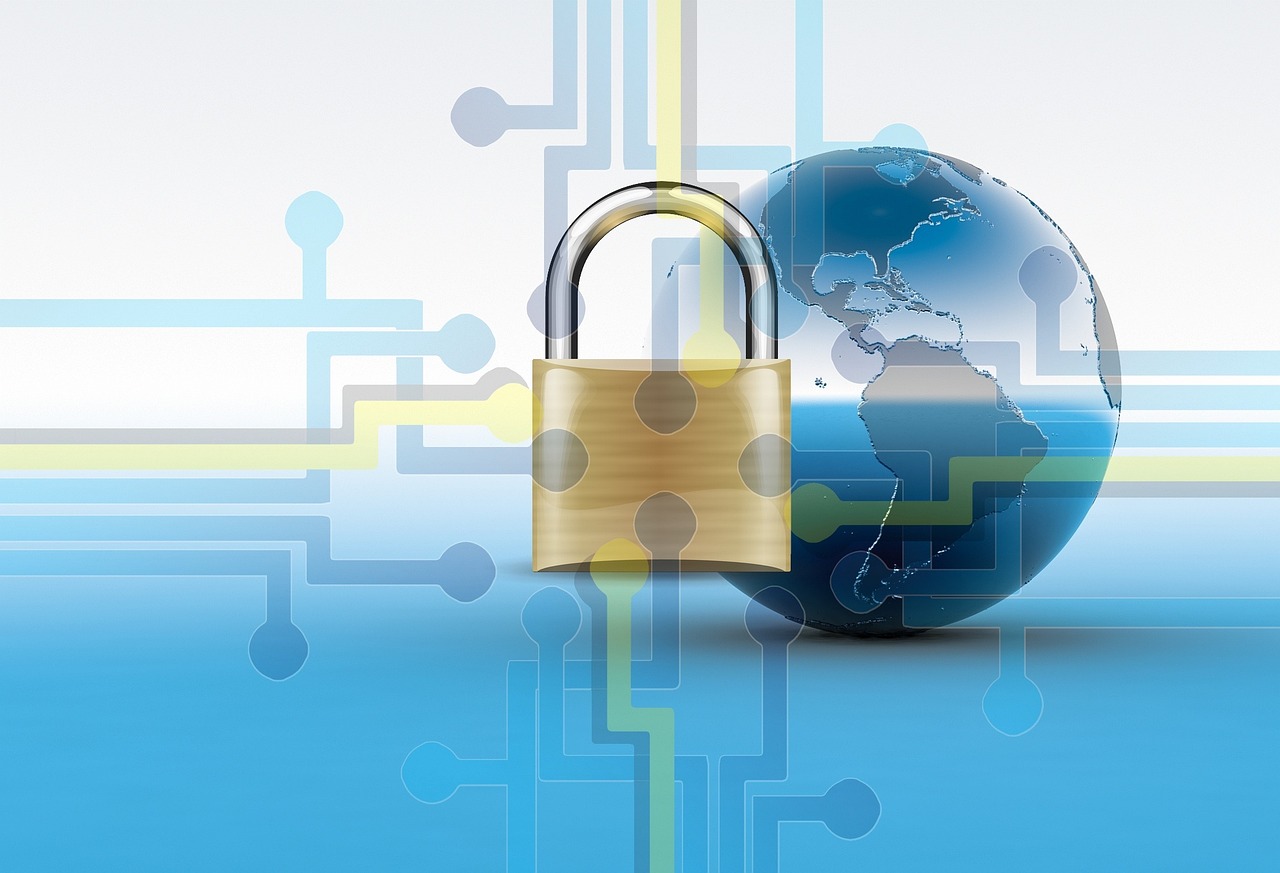
Types of Malware
When we talk about malware, we're diving into a world filled with various malicious software that can wreak havoc on your devices and personal information. Think of malware as a sneaky thief that can take many forms, each with its own unique way of causing trouble. Understanding the types of malware is crucial for anyone who wants to protect their digital life. Here are some of the most common types:
- Viruses: These are perhaps the most well-known type of malware. They attach themselves to clean files and spread throughout a computer system, corrupting or deleting files in the process. Just like a virus in the human body, they can be contagious and spread quickly if not contained.
- Worms: Unlike viruses, worms can replicate themselves and spread independently across networks. They often exploit vulnerabilities in software, making them a persistent threat to both individuals and organizations.
- Trojans: Named after the famous Greek myth, Trojans disguise themselves as legitimate software. Once installed, they can create backdoors for other malware to enter, allowing attackers to steal sensitive data or take control of the system.
- Ransomware: This type of malware locks users out of their data, demanding a ransom for access. It's like being held hostage in the digital world, and paying the ransom doesn’t always guarantee the return of your files.
- Spyware: As the name suggests, spyware secretly monitors user activity and collects personal information without consent. It can be particularly invasive, tracking everything from browsing habits to login credentials.
- Adware: While not always malicious, adware can be annoying and intrusive. It displays unwanted ads and can slow down your device, often leading users to click on dangerous links.
Each type of malware has its own tactics and purposes, making it essential for users to stay informed and proactive about their cybersecurity. The more you know about these threats, the better equipped you are to defend against them. Regularly updating your software, using strong passwords, and employing robust security measures can help keep these digital villains at bay. Remember, in the world of cybersecurity, knowledge is power!
Q1: What is the best way to protect against malware?
A1: The best way to protect against malware includes using reliable antivirus software, keeping your operating system and applications updated, and practicing safe browsing habits.
Q2: Can malware affect mobile devices?
A2: Yes, malware can affect mobile devices just like computers. It's crucial to download apps from trusted sources and keep your device's operating system updated.
Q3: What should I do if I suspect my device is infected with malware?
A3: If you suspect malware infection, disconnect your device from the internet, run a full scan with your antivirus software, and consider seeking professional help if the issue persists.

How to Protect Against Malware
In today's digital world, where our lives are intertwined with technology, protecting ourselves against malware is more crucial than ever. Malware can sneak into our devices like a thief in the night, wreaking havoc on our personal and professional lives. But fear not! There are several effective strategies you can implement to shield yourself from these malicious intruders.
First and foremost, investing in robust antivirus software is a must. Think of it as a security guard for your digital assets, constantly on the lookout for any suspicious activity. A good antivirus program can detect, quarantine, and eliminate malware before it has a chance to cause damage. Make sure to keep your antivirus software updated regularly, as new threats emerge daily.
Another critical aspect of malware protection is keeping your operating system and applications up to date. Software developers frequently release updates that patch vulnerabilities and enhance security features. By ignoring these updates, you leave your devices exposed to potential attacks. So, always hit that update button!
Moreover, safe browsing practices play a significant role in safeguarding your devices. Avoid clicking on unknown links or downloading attachments from unfamiliar sources. These can often be gateways for malware. Instead, stick to reputable websites and be cautious about what you share online. Remember, if something seems too good to be true, it probably is!
Additionally, consider using a virtual private network (VPN) when accessing public Wi-Fi. Public networks are breeding grounds for cybercriminals looking to intercept your data. A VPN encrypts your internet connection, making it much harder for hackers to access your information.
Lastly, it’s wise to regularly back up your data. In the unfortunate event that you do fall victim to a malware attack, having a backup means you won’t lose everything. Use external hard drives or cloud storage solutions to keep your important files safe and sound.
In summary, protecting against malware requires a multi-faceted approach. By combining antivirus software, regular updates, safe browsing habits, the use of VPNs, and data backups, you can create a formidable defense against these digital threats. Remember, staying informed and vigilant is your best weapon in the ongoing battle against malware.
- What is malware? Malware is a broad term that refers to any software designed to harm, exploit, or otherwise compromise a computer system or network.
- How can I tell if my device has malware? Signs of malware infection can include slow performance, frequent crashes, unexpected pop-ups, and unfamiliar programs appearing on your device.
- Is free antivirus software effective? While free antivirus software can provide a basic level of protection, it may lack advanced features and regular updates found in paid versions.
- Can malware affect my smartphone? Yes, malware can target smartphones just as it does computers. It's essential to have security measures in place for mobile devices as well.
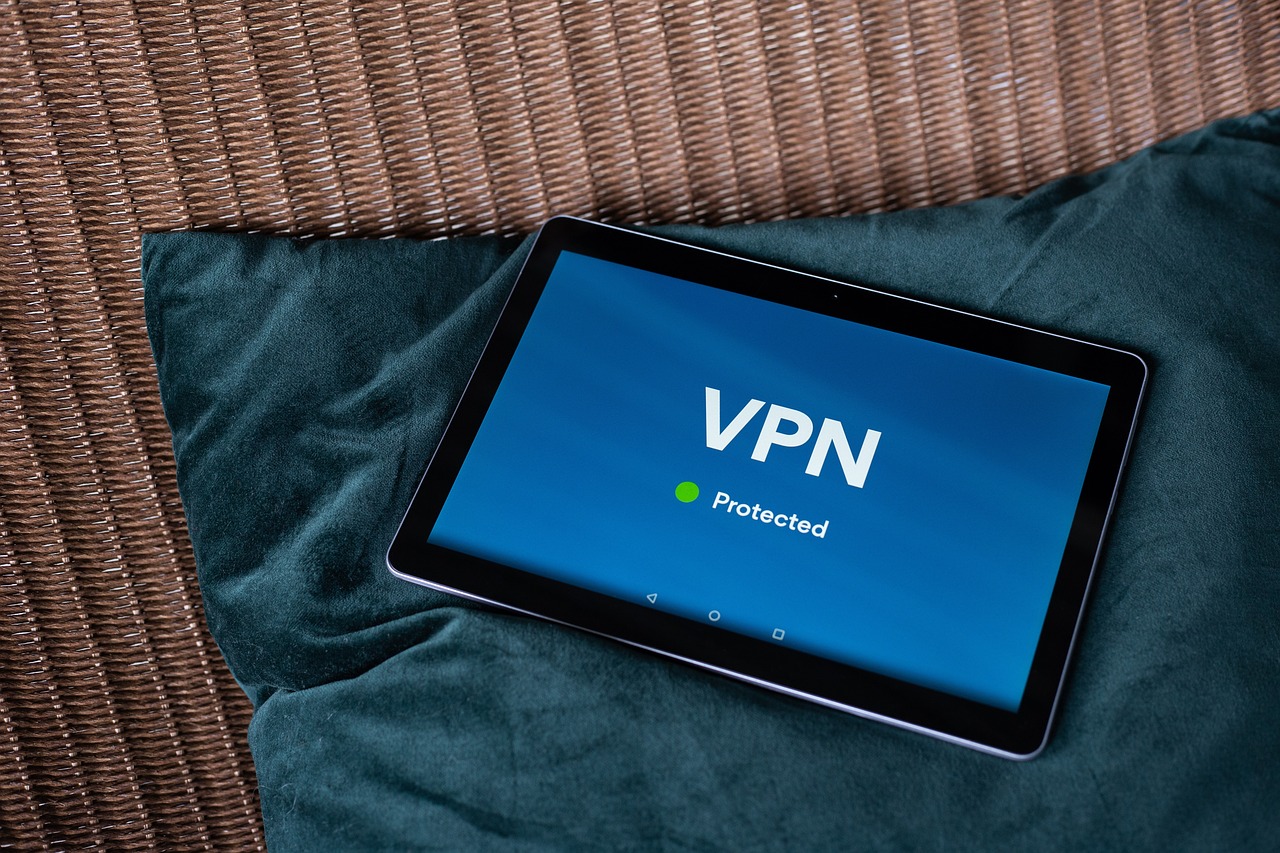
Phishing Scams
Phishing scams are a cunning form of cybercrime that exploit our trust and curiosity. Imagine receiving an email that looks like it’s from your bank, urging you to verify your account information. At first glance, it seems legitimate, right? But that’s exactly what makes phishing so dangerous. These scams use social engineering techniques to deceive individuals into providing sensitive information, such as passwords, credit card numbers, and social security numbers.
Phishing attacks can take many forms, including emails, text messages, and even social media posts. They often create a sense of urgency, prompting the victim to act quickly without thinking. For example, a scam email might state, “Your account will be suspended unless you verify your identity within 24 hours!” This tactic plays on our fear of losing access to important services, making us more likely to comply without questioning the source.
To illustrate the various types of phishing scams, let’s take a look at some common examples:
- Email Phishing: The most common form, where attackers send fraudulent emails that appear to be from reputable sources.
- Spear Phishing: A targeted attack aimed at specific individuals or organizations, often using personal information to make the scam more convincing.
- Whaling: A type of spear phishing that targets high-profile individuals, such as executives or important figures within a company.
- Smishing: Phishing conducted via SMS, where attackers send text messages to trick recipients into revealing personal information.
- Vishing: Voice phishing, where attackers use phone calls to impersonate legitimate organizations and extract sensitive information.
The consequences of falling victim to phishing scams can be severe. Identity theft, financial loss, and compromised accounts are just the tip of the iceberg. Victims may spend months recovering from the aftermath, dealing with the stress of fraud alerts, credit freezes, and potential legal issues. This is why awareness and education are paramount in combating these malicious attacks.
So, how can you protect yourself from phishing scams? Here are some practical tips:
- Always verify the sender's email address before clicking any links or downloading attachments.
- Look for signs of phishing, such as poor grammar, generic greetings, or suspicious URLs.
- Use two-factor authentication wherever possible to add an extra layer of security.
- Keep your software and antivirus programs up to date to defend against known threats.
- Educate yourself and others about the latest phishing tactics and scams.
In a world where technology is constantly evolving, staying informed about the latest phishing strategies is essential. By taking proactive steps and fostering a culture of awareness, we can significantly reduce the risk of becoming victims of these deceitful schemes.
Q: What is phishing?
A: Phishing is a cybercrime where attackers impersonate legitimate organizations to trick individuals into providing sensitive information.
Q: How can I identify a phishing email?
A: Look for signs such as poor grammar, generic greetings, suspicious links, and email addresses that don't match the official domain of the organization.
Q: What should I do if I fall victim to a phishing scam?
A: Immediately change your passwords, report the incident to your bank or credit card company, and monitor your accounts for any unauthorized activity.
Q: Can phishing scams happen on social media?
A: Yes, phishing scams can occur on social media platforms through fake messages or posts that direct you to fraudulent websites.

Impact on Businesses
In today's hyper-connected world, the impact of cybersecurity on businesses cannot be overstated. Every day, companies face a barrage of threats that can jeopardize their operations, reputation, and customer trust. Imagine running a business where every click, every email, and every transaction could potentially expose you to risks that could lead to financial ruin or loss of customer loyalty. This is the reality for many organizations today, and understanding these risks is crucial for survival.
One of the most pressing issues is the risk of data breaches. These incidents can have devastating effects, not only resulting in financial losses but also leading to legal repercussions and significant damage to brand credibility. According to recent studies, companies that experience a data breach can lose an average of $3.86 million, which includes costs related to detection, response, and recovery. The aftermath can be catastrophic, as customers may lose trust in a brand that fails to protect their sensitive information. In fact, a survey revealed that 70% of consumers would stop doing business with a company that experienced a data breach.
Furthermore, businesses must also consider the impact on employee morale. When a company suffers from a cyber attack, it can create a culture of fear and uncertainty among employees. They may feel vulnerable and question their job security, leading to decreased productivity and engagement. To combat this, organizations need to foster a culture of security awareness. This can be achieved through comprehensive employee training programs that educate staff on cybersecurity best practices, helping them understand their role in protecting the organization.
To illustrate the importance of cybersecurity in business, let’s look at the following table that outlines some of the most significant impacts of cyber threats:
| Impact | Description |
|---|---|
| Financial Loss | Direct costs from breaches, including fines and legal fees. |
| Reputation Damage | Loss of customer trust and negative media coverage. |
| Operational Disruption | Downtime and loss of productivity due to attacks. |
| Legal Consequences | Potential lawsuits and regulatory fines for non-compliance. |
As we can see, the implications of cybersecurity breaches extend far beyond immediate financial losses. They can fundamentally alter how a business operates and how it is perceived in the marketplace. Therefore, it is essential for organizations to invest in robust cybersecurity measures. This includes not only technology solutions but also fostering a culture of security awareness among employees. After all, in the realm of cybersecurity, a well-informed and vigilant workforce can be your first line of defense against potential threats.
In conclusion, the impact of cybersecurity on businesses is profound and multifaceted. Companies must adopt comprehensive security strategies to mitigate risks and protect their valuable assets. The stakes are high, and as cyber threats continue to evolve, staying one step ahead is not just advisable—it's essential for survival in today's digital landscape.
- What is a data breach? A data breach occurs when unauthorized individuals gain access to sensitive information, such as customer data or company secrets.
- How can businesses protect themselves from cyber threats? Businesses can protect themselves by implementing strong cybersecurity measures, training employees, and regularly updating their security protocols.
- What role do employees play in cybersecurity? Employees are crucial in maintaining cybersecurity; their awareness and adherence to best practices can significantly reduce the risk of breaches.
- What should I do if my business suffers a data breach? If a data breach occurs, it is important to act quickly by notifying affected individuals, conducting an investigation, and improving security measures to prevent future incidents.

Data Breaches
In today's hyper-connected world, have become one of the most pressing concerns for organizations and individuals alike. A data breach occurs when unauthorized individuals gain access to sensitive information, often resulting in severe consequences for both the victims and the perpetrators. These breaches can expose personal data, financial records, and confidential business information, leading to identity theft, financial loss, and reputational damage.
The impact of data breaches is profound. For businesses, the financial ramifications can be staggering. According to a report by IBM, the average cost of a data breach in 2023 was approximately $4.35 million. This figure encompasses various expenses, including legal fees, regulatory fines, and the costs associated with notifying affected customers. Moreover, the damage to a company’s reputation can lead to a loss of customer trust, which is often harder to recover than the financial losses incurred.
To illustrate the severity of this issue, consider the following statistics:
| Year | Number of Data Breaches | Records Exposed |
|---|---|---|
| 2020 | 1,108 | 36 billion |
| 2021 | 1,862 | 22 billion |
| 2022 | 1,762 | 45 billion |
| 2023 | 1,560 | 30 billion |
As shown in the table, the number of data breaches has remained alarmingly high, with billions of records exposed each year. This highlights the urgent need for organizations to implement robust security measures to protect sensitive data. Companies must adopt a multi-layered approach to cybersecurity, which includes:
- Regular Security Audits: Conducting audits helps identify vulnerabilities in systems.
- Data Encryption: Encrypting sensitive information makes it unreadable to unauthorized users.
- Incident Response Plans: Having a clear plan in place can mitigate damage in the event of a breach.
Furthermore, the importance of employee training cannot be overstated. Employees are often the first line of defense against data breaches, and educating them about cybersecurity best practices can significantly reduce the risk of human error. Simple practices, such as recognizing phishing emails or using strong passwords, can make a big difference in safeguarding sensitive information.
In conclusion, data breaches are not just a technical issue; they are a significant threat to the integrity and trustworthiness of organizations. As cyber threats continue to evolve, so too must our strategies for prevention and response. By prioritizing cybersecurity and fostering a culture of awareness, organizations can better protect themselves and their customers from the devastating effects of data breaches.
- What is a data breach? A data breach occurs when unauthorized individuals access sensitive information, potentially leading to identity theft or financial loss.
- What are the common causes of data breaches? Common causes include phishing attacks, weak passwords, and inadequate security measures.
- How can individuals protect themselves from data breaches? Individuals can protect themselves by using strong passwords, enabling two-factor authentication, and being cautious with personal information online.
- What should companies do after a data breach? Companies should notify affected individuals, investigate the breach, and take steps to improve their security measures to prevent future incidents.
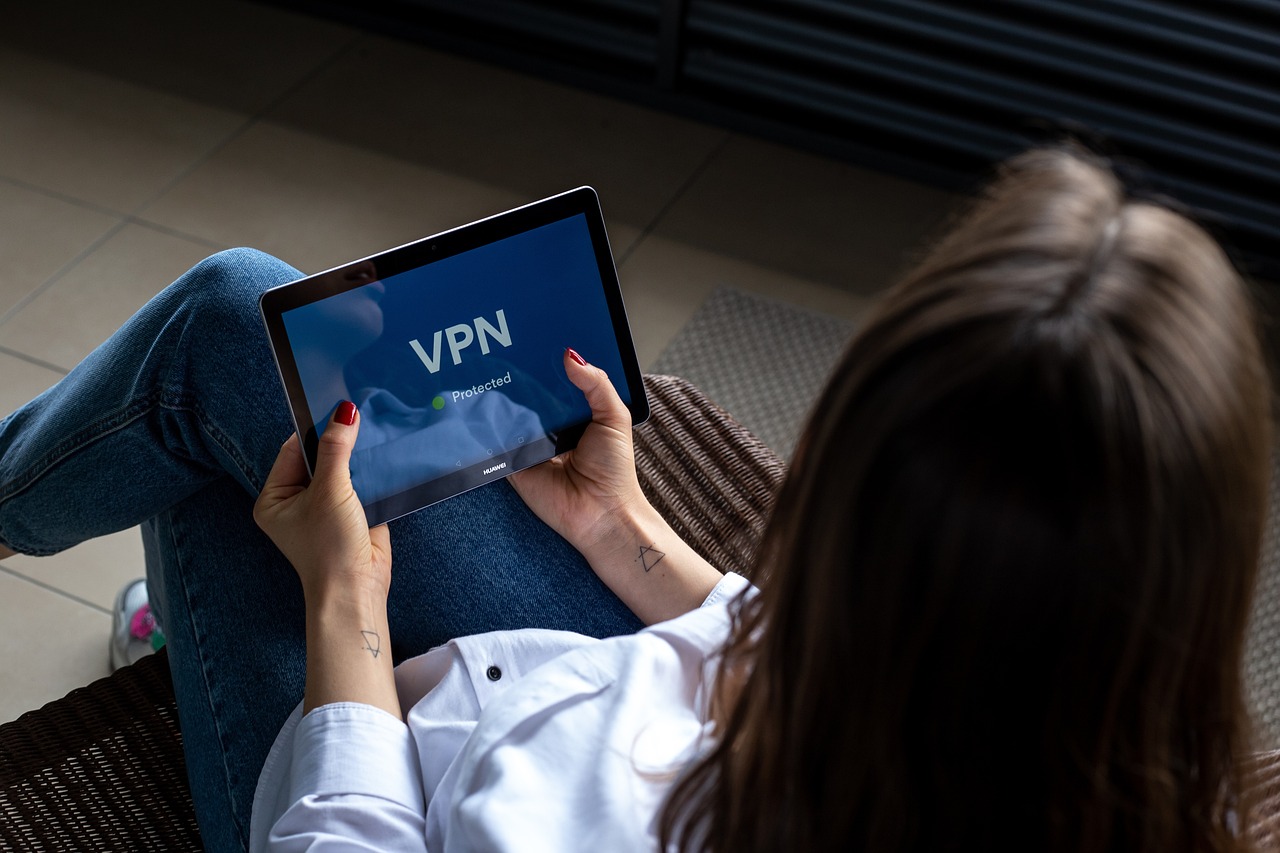
Employee Training and Awareness
In today's digital age, the importance of employee training and awareness in cybersecurity cannot be overstated. Organizations are increasingly recognizing that their greatest asset is not just the technology they employ, but the people who operate it. A well-informed workforce acts as the first line of defense against cyber threats, significantly reducing the risk of data breaches and security incidents. Imagine your employees as the gatekeepers to your company's sensitive information; if they are untrained, it’s like leaving the gate wide open for intruders!
Training programs should be comprehensive and ongoing, covering various aspects of cybersecurity. These programs must not only inform employees about the latest threats but also equip them with practical skills to identify and respond to potential risks. For instance, employees should be trained to recognize phishing emails, which often masquerade as legitimate communications. A single click on a malicious link can compromise an entire network. Thus, fostering a culture of security awareness is essential.
Moreover, organizations can implement various training methodologies to enhance employee engagement and retention of information. Here are some effective strategies:
- Interactive Workshops: Engaging sessions where employees can participate in discussions and simulations of cyber attack scenarios.
- Regular Updates: Keeping the training material current with the latest threats and trends in cybersecurity.
- Gamification: Utilizing games and quizzes to make learning about cybersecurity fun and memorable.
Additionally, it's crucial for organizations to assess the effectiveness of their training programs. This can be achieved through periodic evaluations and feedback collection from employees. By understanding what works and what doesn’t, organizations can continuously improve their training initiatives. A successful training program not only enhances awareness but also empowers employees to take proactive measures in safeguarding their digital environment.
In conclusion, investing in employee training and awareness is not just a checkbox in compliance; it is a strategic necessity. By cultivating a well-informed workforce, organizations can significantly bolster their cybersecurity posture and protect their valuable assets from the ever-evolving landscape of cyber threats.
Q1: Why is employee training important for cybersecurity?
A: Employee training is crucial because employees are often the first line of defense against cyber threats. Well-trained employees can recognize and respond to potential risks, reducing the likelihood of security incidents.
Q2: What topics should be covered in cybersecurity training?
A: Training should include topics such as recognizing phishing attempts, safe browsing practices, password management, and the importance of software updates.
Q3: How often should organizations conduct training?
A: Organizations should conduct cybersecurity training regularly, ideally at least once a year, with updates provided as new threats emerge.
Q4: What are some effective training methods?
A: Effective training methods include interactive workshops, online courses, gamification, and real-life simulations of cyber attacks.

Cybersecurity in Everyday Life
In our fast-paced, digitally driven world, cybersecurity has become an integral part of our daily routines. From online shopping to social media interactions, our lives are intertwined with technology, making it essential to understand how to protect our personal information. Have you ever considered how a single click could jeopardize your sensitive data? With every online transaction or social media post, we leave behind a digital footprint that can be exploited if we’re not careful.
For instance, when you log into your online banking account, you’re not just accessing your funds; you’re entering a realm where cybercriminals lurk, waiting for an opportunity to pounce. That’s why adopting safe online banking practices is crucial. Using strong passwords, enabling two-factor authentication, and regularly monitoring your account for suspicious activity can significantly enhance your security. Think of your password as the key to your digital house—would you leave your front door wide open? Of course not! The same logic applies to your online accounts.
Moreover, with the rise of social media, the potential for privacy risks has skyrocketed. We often share personal details without a second thought, from our location to our daily activities. This oversharing can lead to unauthorized access and exploitation of our data. To combat this, it’s vital to implement security measures such as adjusting privacy settings, being cautious about friend requests, and avoiding sharing sensitive information publicly. Remember, your online presence is like a public park—just because it's open to everyone doesn’t mean you should reveal everything about yourself.
As we navigate through our digital lives, it's essential to remain vigilant and proactive. Cybersecurity isn’t just the responsibility of IT departments or tech experts; it’s something we all need to take seriously. By adopting safe practices and staying informed about potential threats, we can protect ourselves and our loved ones from the ever-evolving landscape of cyber threats. So, the next time you log in to your favorite app or website, take a moment to think about your security—your personal information deserves that extra layer of protection!
- What are the most common cybersecurity threats in everyday life? Common threats include phishing scams, malware, and identity theft.
- How can I protect my personal information online? Use strong passwords, enable two-factor authentication, and be cautious about the information you share.
- Is it safe to use public Wi-Fi for online banking? It is generally not safe; use a VPN or avoid accessing sensitive accounts on public networks.
- What should I do if I think I've been a victim of a cyber attack? Change your passwords immediately, monitor your accounts for unusual activity, and report the incident to relevant authorities.
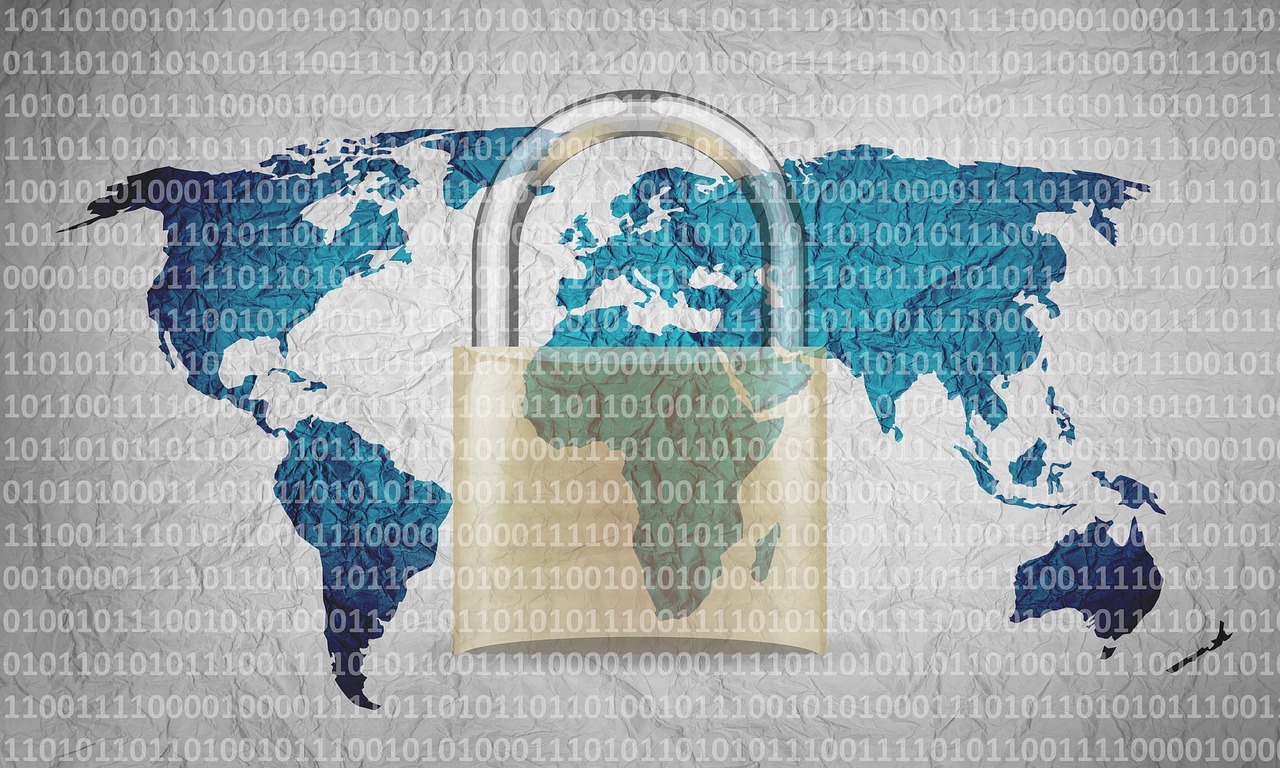
Safe Online Banking
In today's fast-paced digital world, online banking has become a staple of our financial lives. However, with the convenience of managing our finances from the comfort of our homes comes a significant responsibility to ensure our personal information remains secure. Safe online banking practices are essential to protect yourself from potential threats that can compromise your financial security.
First and foremost, using strong passwords is a fundamental step in safeguarding your online banking account. A strong password should be at least 12 characters long and include a mix of uppercase letters, lowercase letters, numbers, and special symbols. Avoid using easily guessable information, such as birthdays or names, as these can be easily exploited by cybercriminals. To help manage your passwords securely, consider using a password manager, which can generate and store complex passwords for you.
Another critical measure is enabling two-factor authentication (2FA). This additional layer of security requires you to provide two forms of verification before accessing your account. For instance, after entering your password, you might receive a code via SMS or an authentication app. This way, even if someone manages to obtain your password, they would still need the second factor to access your account.
It's also vital to keep your devices secure. Ensure that your computer and mobile devices have the latest security updates and antivirus software installed. Regularly updating your operating system and applications helps protect against vulnerabilities that hackers may exploit. Additionally, be cautious about using public Wi-Fi for banking transactions, as these networks can be insecure. If you must use public Wi-Fi, consider using a virtual private network (VPN) to encrypt your internet connection.
When conducting online banking transactions, always verify that you are on the official website of your bank. Look for HTTPS in the URL, which indicates that the connection is secure. If you receive emails or messages claiming to be from your bank, be wary of phishing attempts. Always access your bank's website directly by typing the URL into your browser rather than clicking on links in unsolicited emails.
Lastly, regularly monitor your bank statements and account activity for any suspicious transactions. If you notice anything unusual, report it to your bank immediately. Many banks offer alerts for transactions, which can help you stay informed about your account activity in real-time.
By adopting these safe online banking practices, you can significantly reduce the risk of falling victim to cyber threats and enjoy the convenience of managing your finances online with peace of mind.
- What is two-factor authentication?
Two-factor authentication is a security process that requires two forms of verification to access an account, enhancing security beyond just a password. - How can I create a strong password?
A strong password should be at least 12 characters long, include a mix of letters, numbers, and symbols, and avoid easily guessable information. - Is it safe to use public Wi-Fi for online banking?
Using public Wi-Fi for online banking is risky. If necessary, use a VPN to encrypt your connection. - What should I do if I notice suspicious activity in my bank account?
Contact your bank immediately to report any suspicious transactions, and consider changing your passwords and enabling additional security measures.

Social Media Security
In today's hyper-connected world, social media has become an integral part of our daily lives. We share our thoughts, experiences, and even our personal information with friends and family at the click of a button. However, this convenience comes with its own set of challenges, particularly regarding security and privacy. Have you ever stopped to think about who might be watching your posts or how your data could be misused? Understanding social media security is not just about protecting your accounts; it's about safeguarding your entire digital identity.
One of the most significant risks associated with social media is the potential for unauthorized access to your personal information. Cybercriminals often use techniques such as social engineering to trick users into revealing sensitive information. This can include anything from passwords to personal details that can be used to impersonate you online. For example, if someone knows your birthdate and the name of your pet, they might be able to guess your security questions and gain access to your accounts.
To mitigate these risks, it's essential to adopt a proactive approach to social media security. Here are some key practices to consider:
- Use Strong Passwords: Your password is your first line of defense. Make sure it’s unique and complex, combining letters, numbers, and special characters.
- Enable Two-Factor Authentication: This adds an extra layer of security by requiring a second form of verification, such as a text message or authentication app, in addition to your password.
- Be Cautious with Friend Requests: Always verify the identity of people before accepting their requests. Fake profiles can be used to gather information or spread malware.
- Review Privacy Settings: Regularly check and adjust your privacy settings on social media platforms to control who can see your posts and personal information.
Moreover, it’s crucial to remain vigilant about the content you share. Oversharing can lead to unintended consequences, such as identity theft or stalking. Think of your social media profile as a digital footprint; every post you make contributes to your online reputation. Are you comfortable with a potential employer or a stranger seeing that photo from last weekend's party? The answer should guide your sharing habits.
In conclusion, social media security is not just a personal responsibility; it's a collective effort. By being aware of the risks and taking proactive measures, we can create a safer online environment for ourselves and others. Remember, in the vast digital landscape, your personal information is like a treasure chest. Guard it well, and it will serve you for years to come.
Q1: What should I do if I think my social media account has been hacked?
A1: If you suspect your account has been compromised, immediately change your password and enable two-factor authentication. Report the issue to the platform and check for any unauthorized activity.
Q2: How can I improve my privacy on social media?
A2: Regularly review and update your privacy settings, limit the amount of personal information you share, and be selective about your friend requests.
Q3: Is it safe to use public Wi-Fi for social media?
A3: Public Wi-Fi networks can be insecure, making it easier for hackers to intercept your data. If you must use public Wi-Fi, avoid accessing sensitive accounts and consider using a VPN.

The Future of Cybersecurity
As we look ahead, the landscape of cybersecurity is poised for significant transformation. The rapid pace of technological advancements brings about both exciting innovations and complex challenges. Cyber threats are evolving at an alarming rate, making it essential for individuals and organizations to stay one step ahead. In this digital age, we must embrace new strategies and tools to enhance our defenses against increasingly sophisticated attacks.
One of the most promising developments in the realm of cybersecurity is the integration of artificial intelligence (AI). AI technologies are revolutionizing how we detect and respond to threats. By leveraging machine learning algorithms, organizations can analyze vast amounts of data in real-time, identifying anomalies that could indicate a potential breach. This proactive approach enables quicker responses, minimizing the damage caused by cyber attacks. Imagine having a digital guardian that learns from every encounter, constantly improving its ability to protect your sensitive information.
However, the rise of AI also brings new challenges. Cybercriminals are increasingly using AI to enhance their tactics, making it essential for cybersecurity professionals to adapt and innovate continually. This cat-and-mouse game between defenders and attackers necessitates a culture of continuous learning and adaptation within organizations. It’s not just about having the latest technology; it’s about fostering an environment where security is everyone's responsibility.
Another critical aspect of the future of cybersecurity is the ongoing evolution of regulatory changes and compliance requirements. Governments worldwide are recognizing the importance of data protection and are implementing stricter regulations to safeguard personal and organizational information. Companies must stay informed about these changes to avoid hefty penalties and maintain customer trust. For instance, regulations like the General Data Protection Regulation (GDPR) in Europe have set a precedent for how businesses handle data, emphasizing the need for transparency and accountability.
To navigate this complex landscape, organizations should consider adopting a comprehensive cybersecurity framework that includes:
- Risk Assessment: Regularly evaluating potential vulnerabilities and threats.
- Incident Response Plan: Developing a clear strategy for responding to breaches.
- Employee Training: Ensuring that staff are educated about cybersecurity best practices.
- Data Encryption: Protecting sensitive information through encryption methods.
As we move forward, collaboration among stakeholders will be crucial. Governments, businesses, and individuals must work together to create a secure digital environment. Public-private partnerships can facilitate knowledge sharing and resource allocation, enhancing overall cybersecurity resilience. After all, in a world where cyber threats know no borders, our defenses must be equally robust.
In conclusion, the future of cybersecurity is a landscape filled with both challenges and opportunities. By embracing technological advancements, staying compliant with regulations, and fostering a culture of security awareness, we can build a safer digital world for everyone. The journey ahead may be daunting, but with the right strategies in place, we can navigate the complexities of cybersecurity and protect what matters most.
Q: What role does artificial intelligence play in cybersecurity?
AI enhances threat detection and response capabilities, allowing organizations to analyze data in real time and identify potential breaches more effectively.
Q: How can businesses stay compliant with cybersecurity regulations?
Businesses should regularly review and update their policies to align with current regulations, invest in employee training, and implement robust data protection measures.
Q: What are some common cyber threats to be aware of?
Common threats include malware, phishing scams, and ransomware, which can lead to significant financial and reputational damage if not addressed proactively.
Q: Why is employee training important in cybersecurity?
Employees are often the first line of defense against cyber threats. Training helps them recognize potential risks and respond appropriately, reducing the likelihood of human error.

Artificial Intelligence in Cybersecurity
In today's digital landscape, the integration of Artificial Intelligence (AI) in cybersecurity has emerged as a game-changer, significantly enhancing the way organizations protect their sensitive data. Imagine having a vigilant guard that never sleeps, constantly analyzing vast amounts of data to identify potential threats before they can cause harm. That's precisely what AI does in the realm of cybersecurity. It employs advanced algorithms and machine learning techniques to detect anomalies, predict potential attacks, and respond to threats in real-time.
One of the most impressive aspects of AI in cybersecurity is its ability to process and analyze data at an unprecedented scale. Traditional security measures often struggle to keep up with the sheer volume of data generated daily. However, AI systems can sift through this data, learning from patterns and identifying what constitutes normal behavior for a network. This capability allows for the early detection of unusual activities that may indicate a cyber threat.
To give you a clearer picture, let's consider some of the core functions of AI in cybersecurity:
- Threat Detection: AI can identify and flag suspicious activities much faster than human analysts, reducing the time it takes to respond to potential threats.
- Incident Response: With machine learning, AI can automate responses to certain types of incidents, allowing organizations to mitigate damage swiftly.
- Vulnerability Management: AI systems can continuously monitor networks for vulnerabilities, providing recommendations for remediation before they can be exploited.
Furthermore, the use of AI in cybersecurity is not just about defense; it also involves offensive strategies. For instance, ethical hackers are leveraging AI to simulate attacks and test the robustness of security systems. This proactive approach helps organizations to fortify their defenses against actual cyber threats.
However, it's essential to acknowledge that the integration of AI in cybersecurity is not without its challenges. As AI technology evolves, so do the tactics employed by cybercriminals. They are increasingly using AI to develop sophisticated attacks, making it a double-edged sword. This ongoing battle between AI-driven defense mechanisms and AI-enabled attacks highlights the importance of continuous innovation and adaptation in cybersecurity strategies.
As we look to the future, the role of AI in cybersecurity is set to expand even further. Organizations that embrace these technologies will not only enhance their security posture but also gain a competitive edge in a world where cyber threats are becoming more pervasive. In essence, investing in AI-driven cybersecurity solutions is not just a smart move; it's a necessity for safeguarding our digital lives.
1. How does AI improve cybersecurity?
AI enhances cybersecurity by automating threat detection, improving incident response times, and identifying vulnerabilities more efficiently than traditional methods.
2. Can AI predict cyber attacks?
Yes, AI can analyze historical data and recognize patterns that may indicate a potential attack, allowing organizations to take preventive measures.
3. Are there risks associated with using AI in cybersecurity?
While AI offers significant benefits, it can also be exploited by cybercriminals to launch more sophisticated attacks, necessitating continuous updates and improvements in security measures.
4. Is AI the only solution for cybersecurity?
No, AI is a powerful tool but should be part of a comprehensive cybersecurity strategy that includes human expertise, robust policies, and regular training.

Regulatory Changes and Compliance
In the ever-evolving landscape of cybersecurity, regulatory changes play a pivotal role in shaping how organizations protect sensitive data and maintain compliance. As cyber threats become more sophisticated, governments and regulatory bodies are stepping up to enforce stricter guidelines and standards. This shift is essential not only for safeguarding personal information but also for ensuring that businesses uphold their responsibilities to customers and stakeholders.
Compliance with these regulations is not merely a checkbox exercise; it is a fundamental aspect of a company’s operational strategy. Organizations must stay informed about the latest laws, such as the General Data Protection Regulation (GDPR) in Europe or the California Consumer Privacy Act (CCPA) in the United States. These regulations mandate that companies implement specific security measures to protect personal data and provide transparency about how this data is used.
Failure to comply with these regulations can result in severe penalties, including hefty fines and legal repercussions. For example, under GDPR, companies can face fines of up to €20 million or 4% of their global annual revenue, whichever is higher. This underscores the urgency for businesses to not only understand these regulations but also actively integrate compliance into their cybersecurity frameworks.
To effectively navigate the regulatory landscape, organizations should consider implementing a compliance management system. This system can help track regulatory requirements, monitor compliance status, and facilitate audits. Additionally, fostering a culture of compliance among employees is crucial. Regular training sessions can educate staff about the importance of adhering to regulations and the potential consequences of non-compliance.
Furthermore, organizations should keep an eye on emerging trends in regulation. For instance, the rise of data privacy laws worldwide suggests that businesses may soon face a patchwork of regulations that vary by region. This complexity can complicate compliance efforts, making it essential for organizations to adopt a flexible and proactive approach. By doing so, they can not only avoid penalties but also build trust with their customers, who are increasingly concerned about how their data is handled.
In conclusion, as regulatory changes continue to evolve, organizations must prioritize compliance as a core component of their cybersecurity strategy. By staying informed, investing in training, and implementing robust compliance management systems, businesses can navigate the challenges of the regulatory landscape while enhancing their overall security posture.
- What are the main cybersecurity regulations I should be aware of?
Key regulations include GDPR, CCPA, HIPAA, and PCI DSS, each focusing on different aspects of data protection and privacy.
- What are the consequences of non-compliance?
Non-compliance can lead to significant fines, legal actions, and reputational damage, impacting customer trust and business viability.
- How can I ensure my business remains compliant?
Regular training, audits, and the implementation of a compliance management system are effective ways to maintain compliance.
Frequently Asked Questions
- What is cybersecurity and why is it important?
Cybersecurity refers to the practices and technologies designed to protect computers, networks, and data from unauthorized access, damage, or attacks. It's crucial in our digital age because it safeguards personal information, business assets, and national security from a variety of cyber threats.
- What are the common types of cyber threats?
Common cyber threats include malware, phishing scams, ransomware, and data breaches. Each of these threats exploits different vulnerabilities, and understanding them is key to protecting yourself and your organization.
- How can I protect myself from malware?
To protect against malware, it’s essential to use robust antivirus software, keep your operating system and applications updated, and practice safe browsing habits. Avoid clicking on suspicious links or downloading unknown attachments.
- What should I do if I fall victim to a phishing scam?
If you suspect you've fallen for a phishing scam, immediately change your passwords, monitor your accounts for unauthorized transactions, and report the incident to your bank and local authorities. Quick action can help mitigate potential damage.
- How does cybersecurity affect businesses?
For businesses, cybersecurity is vital as it protects sensitive data and maintains customer trust. A cyber incident can lead to financial losses, legal issues, and damage to a brand’s reputation, making proactive measures essential.
- What are the best practices for safe online banking?
To ensure safe online banking, use strong, unique passwords, enable two-factor authentication, and regularly monitor your accounts for any suspicious activity. Being vigilant can greatly reduce your risk of fraud.
- How can I secure my social media accounts?
Securing your social media accounts involves using strong passwords, adjusting privacy settings, and being cautious about the information you share. Regularly reviewing your friends and followers can also help keep your account secure.
- What role does artificial intelligence play in cybersecurity?
Artificial intelligence enhances cybersecurity by providing advanced threat detection and response capabilities. It helps organizations to identify potential threats faster and more accurately, improving overall security measures.
- Why is compliance with cybersecurity regulations important?
Compliance with cybersecurity regulations is essential to avoid legal penalties and to ensure the protection of sensitive data. Understanding these regulations helps organizations implement effective security practices that safeguard both their operations and customer information.



















